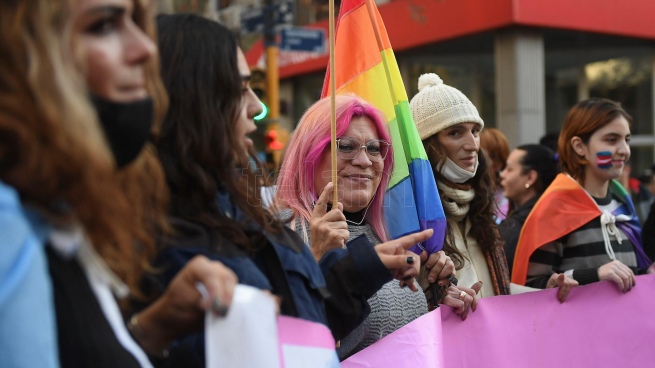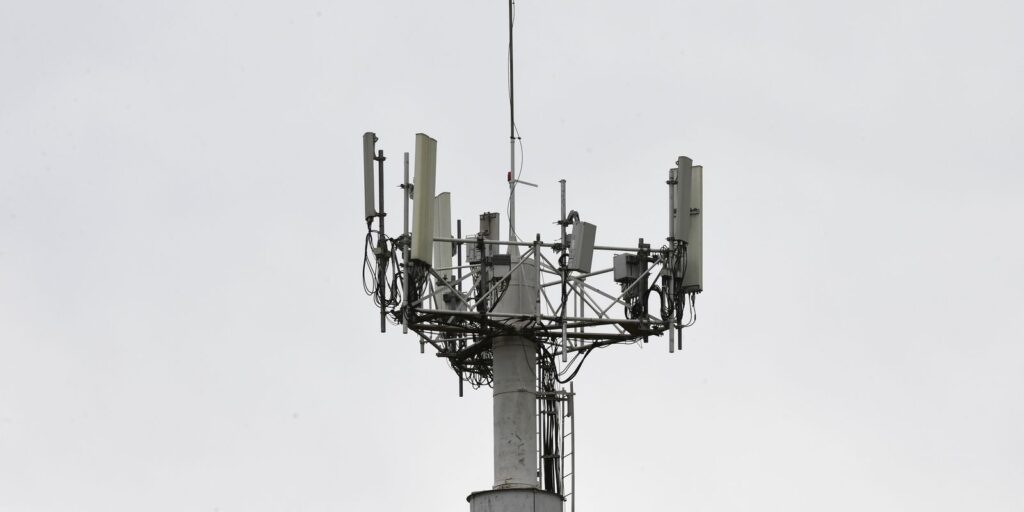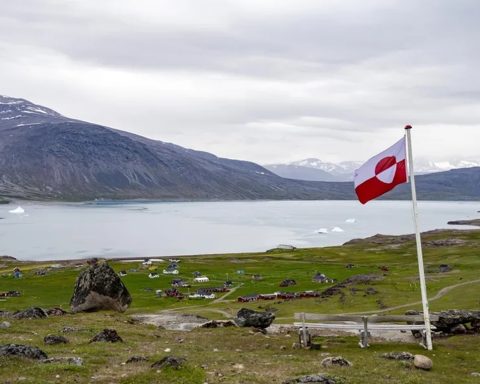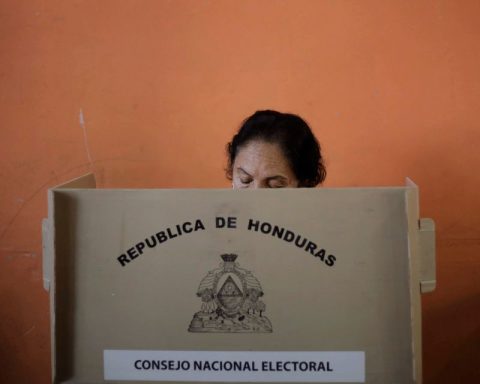67% of Argentines would like to see the LGBTIQ+ community more represented in advertisements and 53% have at some time taken sides against prejudiced expressions about this group, according to an Ipsos investigation that also shows that six out of 10 respondents support companies or brands that actively promote equality.
The results correspond to the investigation “Diversity and inclusion” presented this Thursday by this market research consultancy, which quantitatively and qualitatively analyzes “the treatment that brands make of these issues from the perspective of Argentine consumers.”
“This year we began to receive specific requests from our clients on how to work on the issue of sexual diversity in their communication proposals or actions, which was something that we did not see as a concern before,” Martín Tanzariello, director of the qualitative area of Ipsos, told Télam. Argentina.
“With this research we do not encourage the idea that all brands have to work on these issues, but we do propose that they become aware that it is a sensitive and delicate issue, and also define what role or position they are going to take in this regard. because there is expectation among consumers”Martin Tanzariello
Tanzariello explained that very specific queries began to arrive such as “where do I start talking about diversity?”, “what impact does it have on my consumers?” and “Do I (as a brand) have the necessary information?”
In response to these needs, Ipsos produced this study, which is actually a first chapter dedicated to gender identity and sexual orientationwithin its “Diversity and Inclusion” series.

A survey carried out at the local level specifically showed that “when Argentines are asked if they are for or against seeing more characters or more LGBTIQ+ representations in advertisements, 67% said they were in favor”, a percentage that rises to 74% if only the responses from women are taken and 72% if the cut is made for young people.
“With this research, we do not encourage the idea that all brands have to work on these issues, but we do propose that they become aware that it is a sensitive and delicate issue, and also define what role or position they are going to take when respect because there is expectation among consumers,” he said.
This data is evidenced as a global trend when a previous Ipsos survey is incorporated into the analysis.
“Argentina is one of the most developed countries in the world in terms of diversity and inclusion”Martin Tanzariello
“Ipsos Global conducted a study last year that confirms to us that the inclusion of diversity is an issue that is beginning to challenge society in general – that is, it is not just a concern of the collective – and worldwide one in three people has spoken out against people with LGBTIQ+ prejudices“, he pointed.
The role of young people
Also at a global level, the overrepresentation of young people among those most concerned about the issue is verified.
Among ‘generation Z’ – those between 12 and 25 years old – this percentage reaches its maximum of 40%, “which is in line with a 2019 study on this generational group, in which it is seen that the issues that as a flag are diversity and inclusion, equal opportunities and sustainability”.
“The 2021 Ipsos Global study shows that Argentina is one of the most developed countries in the world in terms of diversity and inclusion, because 53% of Argentines have at some time spoken out against someone who expressed LGBT prejudices when worldwide that value is 30%Tanzariello pointed out.
“Argentina is 20 points above the average,” he stressed.

From the “stigma” to the “naturalization” of sexual diversity: the journey of advertisements
An analysis in historical perspective allows us to identify four consecutive trends regarding the way of representing sexual diversity by advertising in Argentina, ranging from “stigma” to the current “naturalization”, according to a study by the consulting firm Ipsos Argentina.
“For this research on ‘Diversity and Inclusion’ we carried out a semiotic analysis of more than 200 advertisements from the last 20 years to respond to how the representations of different gender identities and sexual orientations were changing,” Martín Tanzariello from Ipsos Argentina told Télam.
From this analysis, the development was segmented into four different chapters: “a first chapter that we call ‘stigma’a second that we call ‘coming out’a third party we call ‘pride’ and a fourth we call ‘naturalization’“he explained
The stigmatizing way of representing the LGBTIQ+ collective had its peak 20 years ago when “they presented the issue as a joke or a problem.”
An example of this is the remembered advertisement for Fernet Cinzano “One in ten men is gay” of 2013.
A second moment is called “coming out of the closet” and is the one in which the brands represent the moment in which people make their dissent public, “emphasizing the reactions of acceptance by family, friends and society of this moment”.
Advertising “Pearl” launched in 2015 by the Banco de la Provincia de Buenos Aires can work as an example of this.
“In a third stage that we define as ‘Pride’, brands try to represent themselves as diverse and involved with the causes of diversity and inclusion, but focus on raising the flag without a clear link with the product or service. they offer,” he said.
The chosen example, in this case, is the spot “Pride” presented by Sprite in 2019.
“And finally, the last stage, the one in which many brands are currently, is the ‘naturalization’ where advertisements try to represent gender identities and sexual orientations in a framework of daily life and without focusing on them but on the products and services that they offer, through a framework of daily life, without direct references to this diversity”, he concluded.
the spot “Moving”from the insurer Prudential from 2020, is the example cited by Ipsos in this report to exemplify this stage.
The perception of same-sex marriage
Another fact that confirms this scenario is the perception of same-sex marriage.
“73% of Argentines have declared themselves in favor of same-sex marriage in 2021 versus 48% who had given the same measurement in 2013, which implies that in these eight years the positive perception of same-sex marriage grew 25 points here“, he added.
In addition, the fact that almost three-quarters of the Argentine population views same-sex marriage with good eyes, “places the country above all those in the region; because in Chile it is 65%, in the case of Mexico it is 63.” %, in Brazil 55%, in Colombia it is 46% and in Peru 35%”.
the brands
Regarding the positive perception of companies and brands that actively promote the inclusion of diversity, Argentine audiences are 12 points above the global average, which is 47%.
“The cost for a brand of not including these issues in its communications is not fulfilling a positive expectation that Argentines have today. legislative changes that are taking place in the country and throughout Latin America,” he explained.
But the cost can be even higher if treated incorrectlyeither because the topic is forced into the subject or an approach that is not exempt from prejudice or anachronism is made, as in the case of the “Putin” spot launched by T&C Sports on the occasion of the 2018 World Cup in Russia.
The spot was taken off the air a few hours later due to the demonstrations of repudiation harvested, as it was identified as homophobic and sexist.
“Not working in a respectful and appropriate manner on diversity and inclusion issues can cause a brand to stop being chosen, because that incorrect treatment becomes a barrier in the bond with the brand, and it can begin to be perceived that it is not online. with current values and challenges,” he said.
Something similar can happen if the messages are read as “pink washing”that is, forcibly including LGBTIQ+ content as a marketing strategy but without consistently sustaining those same values in the long term in other communications or in the company’s organizational culture.
“The important thing here is not only what is shown outside, but also what happens inside, that is, how its employees are treated in terms of inclusion of diversity,” explained Tanzariello.
The negative impact of a bad approach “can be such as to affect its image and reputation”, when the error becomes news or the subject of a boycott campaign on social networks or receives warnings from state agencies.
The report concludes with a “recipe book” which, among other recommendations, proposes that sexual diversity “should not be a prominent element of the story”, that it should be represented in a positive way and within the framework of stories of daily life, that it is better to use neutral language and that brands should “be” as well as “seem” inclusive.


















